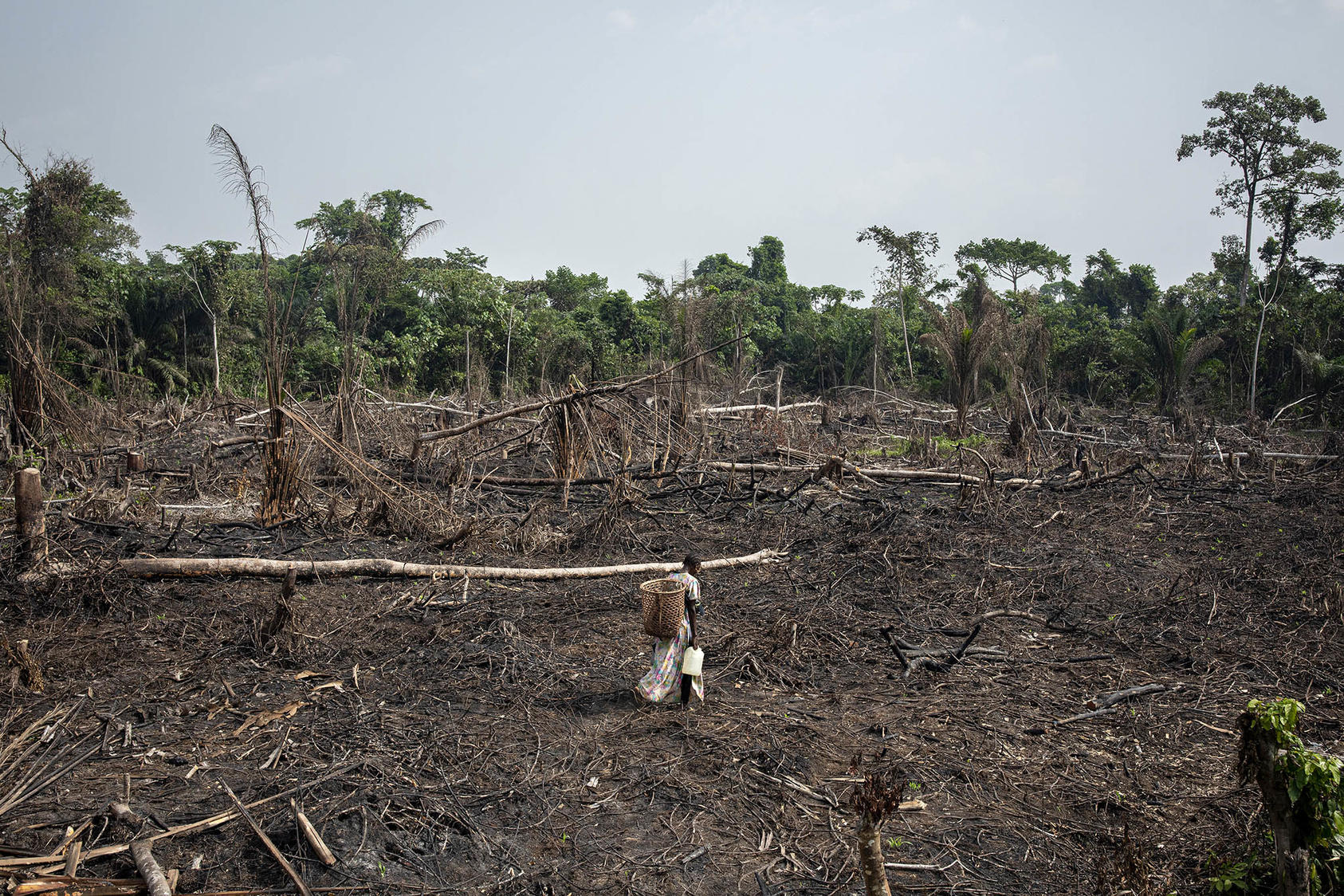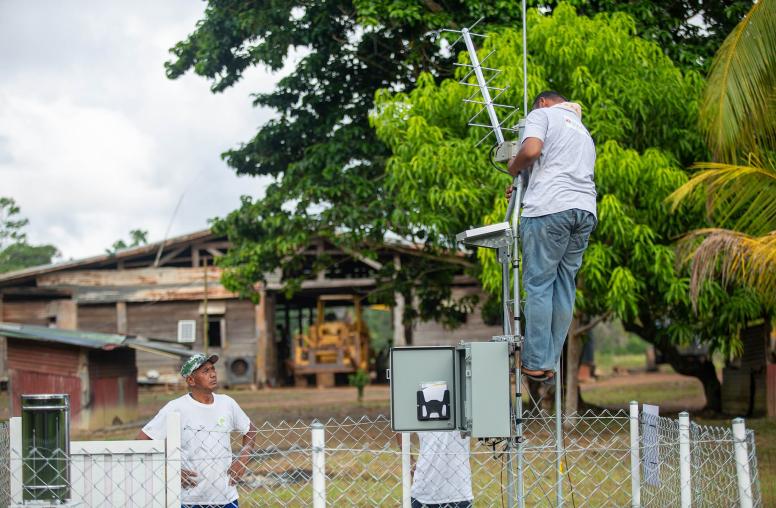How Climate Change Fuels Instability in Central Africa
Already stretched thin by other crises, Central African governments and militaries are ill-prepared to absorb climate shocks.
Beleaguered by a history of prolonged conflict and socioeconomic insecurity, Central Africa is now considered one of the most vulnerable regions in the world when it comes to climate and environmental shocks. Countries in the region are already feeling the effects, as unpredictable bouts of extreme weather and drought have started to drive displacement, impede governance and incite tensions at all levels of society.

The magnitude of these shocks is only expected to increase in the coming years. But Central African governments and militaries are stretched thin and remain heavily reliant on security and humanitarian assistance. Without a concerted effort to build resilience, adding climate shocks to the region’s complex mix of crises will only instigate further instability as time goes on.
USIP’s Archibald Henry looks at what makes Central Africa so vulnerable to climate shocks, the effect on the region’s security and economic development, and what the international community can do to help Central African countries absorb and adapt to the threats of climate change.
Central Africa is considered one of the most vulnerable areas in the world when it comes to climate shocks. What makes this region so susceptible to the worst-case scenarios of climate change?
The region’s vulnerability stems from several factors — including a long history of violent conflict, unsolved political and economic grievances, fragile state institutions, rapid population growth, unemployment, widespread displacement, and others. More specifically, it’s the interplay between these trends and climate events that calls for serious concern.
Climate shocks like extreme weather and droughts can contribute to an already precarious situation in some contexts in Central Africa. In countries like Central African Republic (CAR), increased scarcity in natural resources, such as water and cattle grazing ground, could exacerbate competition over land and fuel intercommunal tensions and conflict between herders and farmers. Climate shocks would also aggravate food crises in the Democratic Republic of Congo and Chad, where agricultural production is already reeling from the effects of violence and insecurity.
Other weather events like extreme flooding could fuel displacement throughout Central Africa and lead to the spread of illnesses such cholera, adding stress to already weak health systems.
While these dynamics also play out in other parts of the continent — including the Sahel and the Horn of Africa — Central Africa’s unique set of risk factors and protracted crises make its countries and citizens particularly vulnerable to climate shocks amid ongoing conflict.
The region is already prone to conflict and requires significant humanitarian aid. What effect will climate shocks have on current efforts to economically develop the region?
Climate and environmental shocks could also overburden government efforts to deliver basic services to their citizens, like education, health care and job creation. National budgets in the region are already under pressure from the COVID-19 pandemic and its effects on socioeconomic life. Combine that with surging prices of global commodities like fuel and supply shortages, and Central Africa is currently facing a challenging economic environment for countries and their citizens.
In countries undergoing political transitions like Chad and CAR, responding to climate shocks and their economic effects could cause further strains on national and local governments, increase tensions between citizens and their governments, and even spark new waves of popular discontent. This could also enhance existing divides and disproportionately affect the people already most impacted by conflict and violence.
Overall, extreme pressures on natural resources and government services could create conditions for cyclical or renewed violence at the local, national or regional level. This would constitute a setback for economic development initiatives in Central Africa, which are often predicated on peace and security. It’s important that donors, policymakers and other partners take a close look at these dynamics and ensure their engagement in the region is grounded in conflict- and climate-sensitive understandings of each context and its specific vulnerabilities, including at the local level.
How might climate-induced displacement from Central Africa affect the region, the African continent and the world more broadly?
Protracted displacement is already a significant trend in Central Africa due to decades of violent armed conflict and civil strife. Climate-related displacement will only compound existing political, social and economic vulnerabilities. It’s essential that governments and regional and international actors are prepared to absorb these shocks and mitigate the adverse effects of climate-induced displacement.
Climate and environmental shocks have already fueled displacement in Burundi, Chad and CAR — where heavier rainfall can cause extreme and flash flooding and landslides. Just this past summer, capitals like Bangui and N’Djamena suffered from severe flooding, causing significant disruptions to utility networks and economic activity and forcing citizens to flee their homes.
Displacement driving people away from urban areas due to flooding can also be a concern in rural areas with heightened competition over resources, further complicating tensions between communities. Meanwhile, extreme heat can increase and worsen droughts — which would slow rural economic activity based on subsistence agriculture or pastoral herding.
Climate-induced displacement across borders would also put pressure on the countries receiving displaced persons, including in their urban areas. Just as climate shocks can affect intercommunal dynamics at the country level, they can also cause tensions between countries. “Climate migrants” in neighboring countries are also likely to face issues similar to other migrants, such as their legal status, tensions with host-country populations, and competition over jobs.
How could this impact militaries in the region?
It’s fair to say militaries are already stretched thin in Central Africa. They often operate in unique environments, with a large array of priorities requiring high level capacities to manage or respond to threats. In some cases, armies are deployed to support law enforcement and counter urban crime. In others, they battle insurgent groups, contain violent extremism across borders or attempt to recapture large swaths of territory. They may also oversee political transitions to civilian rule amid regular protests. There are also concerns of mismanagement, human rights abuses, gaps in command and control, and uneven capacity to deal with threats.
Extreme weather events and climate shocks would create an additional stress factor for security forces in the region. Especially in cases of civil strife or spillovers in regional conflict, militaries could be unprepared to execute orderly evacuations following extreme weather like severe flooding or landslides.
Many militaries also don’t possess the right tools to engage in constructive dialogue with populations or address local tensions over resources. This could cause further discontent in areas where militaries are not perceived as responsible or legitimate actors.
Security sector assistance to countries in the region should be sensitive to local conflict dynamics, popular grievances against state institutions and the risks of climate and environmental shocks. International training of partner forces in Central Africa could include a focus on civil-military relations, community engagement and the management of shocks. Training should also emphasize best practices in responding to natural disasters, incorporating local needs and mitigating risks of conflict and violence.
What role might the United States and its allies be asked to play in addressing climate shocks in Central Africa? What can be done now to help bolster Central Africa’s resilience in the face of future climate shocks?
Since conflict remains a key feature in Central African settings — and a significant source of vulnerability to climate shocks — it’s important that bilateral and multilateral partners in the region maintain a focus on the peaceful management and resolution of disputes.
The United States, along with other countries like those in the European Union, can continue to support democratic institutions and transitions, inclusive peace processes, and civil society initiatives that address fragility and build peace.
Meanwhile, the United States and others should continue to fund humanitarian assistance in conflict-affected countries and use development and other assistance to bolster local, national and regional capacities to deal with the effects of climate shocks.
Donors should also devote significant resources to understanding the drivers of conflict in different settings — including at the local level — as well as how those conflicts can be exacerbated by climate and environmental factors. Incorporating these nuanced analyses in programming, policy decisions and diplomatic engagement would go a long way toward tackling these risks from the outset.
Archibald Henry is a program officer for Central Africa and the Sahel at USIP.



